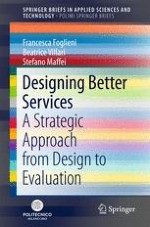This book provides accessible, comprehensive guidance on service design and enables practitioners approaching the discipline for the first time to develop the strategic mindset needed to exploit its innovation potential. The opening chapters trace the origins of service design and examine its links with service innovation, as well as its strategic role in service organizations. It then offers step-by-step guidance on tackling a service design project, explaining the main design elements and indications of various useful design tools. It also introduces the topic of evaluation as a support practice in designing or redesigning better services, and providing evidence concerning the value of service design interventions. The third chapter explores how evaluation is currently approached in service design practice through the analysis of a number of case studies. Based on these experiences it extensively discusses evaluation, with a particular focus on service evaluation, and explains its importance in supporting service design and fostering innovation throughout the service design process. Further it describes pragmatic directions for setting up and conducting a service evaluation strategy. The concluding chapter uses an interpretive model to summarize the role evaluation could have in service design practice and focuses on interdisciplinary competences that need to be acquired by service designers in order to address the evolution of the discipline. The novel approach adopted in the book fosters the growing interest in design-driven service innovation and assists in realizing its full potential in both the private and the public sector.
